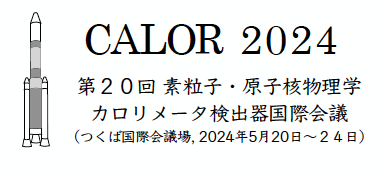Conveners
LHC/HL-LHC 2
- Daniel Jeans
The CMS-HF Calorimeter is designed to detect the forward going particles. Discovery type events are believed to produce high energy particles going at forward angles. Hence, it is important to determine the particle energies accurately by making sure that the detectors have the right calibration all the time. The CMS-HF calorimeters have quartz fibers as the active element. Particle showers...
The Tile Calorimeter (TileCal) is a sampling hadronic calorimeter covering the central region of the ATLAS experiment, with steel as absorber and plastic scintillators as active medium. The scintillators are read-out by the wavelength shifting fibers coupled to the photomultiplier tubes (PMTs). The analogue signals from the PMTs are amplified, shaped, digitised by sampling the signal every 25...
To cope with the increase of the LHC instantaneous luminosity, new trigger readout electronics were installed on the ATLAS Liquid Argon Calorimeters.
On the detector, 124 new electronic boards digitise at high speed 10 times more signals than the legacy system. Downstream, large FPGAs are processing up to 20 Tbps of data to compute the deposited energies. Moreover, a new control and...
In order to withstand the high expected radiation doses at the High-Luminosity LHC, the ATLAS Liquid Argon Calorimeter readout electronics will be upgraded.
This includes the development of custom preamplifiers and shapers meeting low noise and excellent linearity in 65 nm and 130 nm CMOS technologies to meet these requirements, a new ADC chip with two gains over a dynamic range of 16 bits...
The aim of the LHCb Upgrade II is to operate at a luminosity of up to 1.5 x 10$^{34}$ cm$^{-2}$ s$^{-1}$ to collect a data set of 300 fb$^{-1}$. The required substantial modifications of the current LHCb electromagnetic calorimeter due to high radiation doses in the central region and increased particle densities are referred to as PicoCal. An enhancement of the ECAL already during LS3 will...
